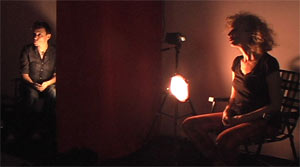The DIWO culture is very apparent through all the works we have done throughout the past couple of weeks, not just in the third space but also in the first space. the third space makes collaborating even more possible because of the accessibility of the internet, though I believe that there are traditional ways of collaborating as well.
DIWO is a gift of resistance in the 21st Century, exploring relational and hybrical realizations. It is socially informed, constantly adapting, intuitive and grounded. It can collide with mainstream culture but also exist deeper in the networked shadows, in accordance to the needs of who ever participates at any given time. –Marc Garrett (2014)

I think it is interesting to think of DIWO as a ‘gift of resistance’. Instead of having everything made to be aesthetically pleasing, I see how the exquisite glitch can be an art in itself- the process that the image goes through to become the way that it ends up at, how each person gives the image their own personal touch, whether it is scaling the image, pixelating it or liquifying the image. It is basically resisting the idea that the picture must be perfectly framed or taken at a certain time of day, and makes it socially and artistically acceptable to have a different aesthetic. The work adapts to whatever situation it is placed in, no matter the social context it was initially taken in. As the image gets passed through the different hands, the image is manipulated to form a different kind of aesthetic that reflects the person’s frame of mind at the time, and the end product is much more interesting as you look at the different stages that it had gone through to reach the end point. You end up with a collective narrative.
In the 21st century, it is also important to note how DIWO is relevant to the Third Space, since it introduces another dimension to DIWO. More than just doing things online, we can do things online together. The Telestroll microproject highlighted how we can use the internet to our advantage, as it can incorporate the first and third space together. Felicia and Bala’s collaboration on the Telestroll encapsulates this well, since they ‘collaborated’ with the people that they saw on the streets and interviewed, as well as collaborated with each other via the Facebook live. This would not have been possible if done alone or without the help of the third space.
Going beyond the paradigm is not easy when you do it alone, but when you collaborate, it is more possible. After all, two (or more) brains are better than one.



